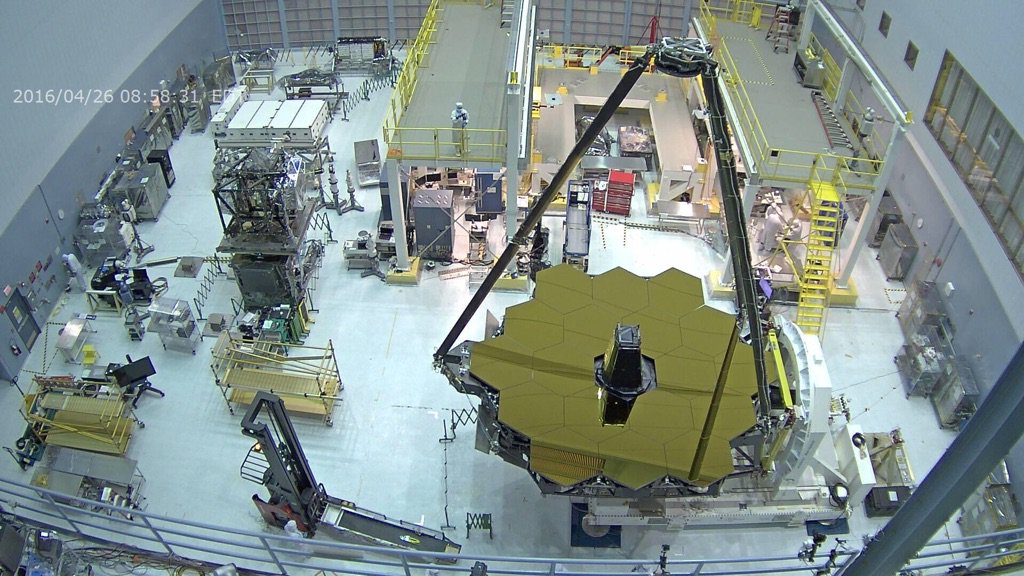The 6.5m-diameter primary mirror for the James Webb Space Telescope (JWST), which will be the successor to the Hubble Telescope when it is launched in 2018, has been uncovered in preparation for the fitting of the telescope’s vital instrumentation.

While previous space telescope mirrors have been single pieces, JWST’s primary mirror – the component that collects photons from its distant observation targets and determines both the brightness of its images and how far it can see into space – is so big that it is built up from sections. The mirror comprises eighteen hexagonal sections, each one 1.32m in diameter, measured from a flat side to its opposite flat side (rather than from vertex to opposite vertex). By comparison, Hubble’s primary mirror is 2.4m across, and the largest previous space telescope primary, which belonged top the European infra-red telescope Herschel, was 3.5m in diameter.
Segmenting the mirror allowed JWST’s designers to maximise its area while minimising its mass. Each segment, made from the light metal beryllium and coated with highly-polished gold to create its reflective surface, weighs about 20kg, and has less than a tenth of the mass per unit area than Hubble’s primary. Moreover, the segmented structure allows the sides of the mirror to be folded in on itself so that it fits inside the faring of its launch vehicle, the European Ariane V rocket. Each mirror is equipped with six actuators to alter its tilt and orientation, and another in its centre to adjust its curvature; together, these devices form the focusing system for the telescope (the telescope’s secondary mirror has the six orientation actuators but not the central curvature one).
Each mirror was installed with a protective cover, but these were not fixed in place. As the telescope must be rotated so that the instruments can be mounted behind the primary mirror, the covers had to be removed. The protective, low-dust environment of the Goddard clean room will prevent the mirror from being damaged during this operation. Once the instruments are attached, JWST will be sent for environmental testing where it will be shaken and blasted with sound to simulate launch; it will then be vacuum- and chill-tested. Once these tests are completed, the telescope’s flight and communications systems and sunshade will be installed, and the whole assembly dispatched to the ESA spaceport in Equatorial Guinea for launch.
JWST’s mission is to observe very distant galaxies to investigate the conditions of the young universe. It will uses instruments from the US, Canada and Europe. ESA has provided two instruments: the mid-infrared instrument (MIRI), which will detect the red-shifted light from receding galaxies, new stars, comets and objects in the Kuiper belt; and the near-infrared spectragraph, which will be the first instrument in space capable of observing 100 objects simultaneously.





Nanogenerator consumes CO2 to generate electricity
Whoopee, they've solved how to keep a light on but not a lot else.